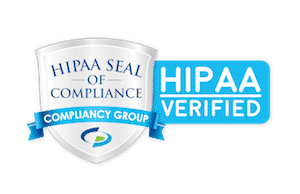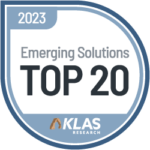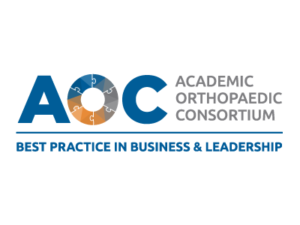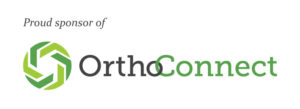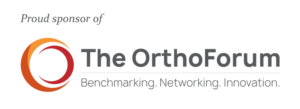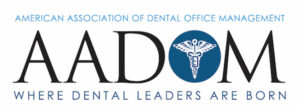Healthcare organizations are finally starting to see some relief after years of margin pressure. Hospitals reached a median operating margin of 4.9% in 2024, a significant improvement from 2023. Yet beneath these promising headlines lies a more complicated reality. 40% of hospitals were still operating in the red last year, and more than 700 rural hospitals face the risk of closure.
The gap between thriving health systems and struggling ones has never been wider. While some organizations have built robust balance sheets and found their footing, others continue to hemorrhage resources despite seemingly stable top-line numbers. The difference often comes down to something deceptively simple but critically important: how efficiently they acquire new patients.
The Hidden Cost Undermining Growth
 Most healthcare marketing teams track the usual suspects. They monitor click-through rates on digital ads and celebrate campaign reach and impression numbers. They review monthly reports filled with vanity metrics that look impressive in board presentations but tell an incomplete story about actual business performance.
Most healthcare marketing teams track the usual suspects. They monitor click-through rates on digital ads and celebrate campaign reach and impression numbers. They review monthly reports filled with vanity metrics that look impressive in board presentations but tell an incomplete story about actual business performance.
What gets lost in this flood of data is the single metric that connects marketing spend directly to financial sustainability: patient acquisition cost, or PAC. This figure represents the total expense required to convert a prospective patient into an actual, revenue-generating appointment. It includes not just ad spend but also staff time, technology costs, creative services, and everything else that goes into bringing someone through your doors.
Here’s why it matters right now. Healthcare organizations are continuing to operate within a hybrid payment environment while demographic and site-of-care utilization shifts are driving up the medical complexity of hospital patients. Patient acuity has increased 3% compared to 2019, indicating that hospitals are now serving patients with more severe conditions or more complicated illnesses. In other words, the patients you’re treating are more expensive to care for, which means the margin on each patient visit is under pressure. If you’re spending too much to acquire those patients in the first place, profitability becomes nearly impossible to achieve.
The math is unforgiving. When patient acquisition cost exceeds patient lifetime value, every new patient you bring in actually loses money for your organization. Even when PAC stays below lifetime value, an inefficient ratio means you’re leaving significant profit on the table.
What the Numbers Actually Look Like
Healthcare marketing has become an expensive proposition. Industry data shows considerable variation in what organizations pay to acquire patients, but the ranges tell an important story. Digital channels like search advertising and social media typically generate acquisition costs that vary based on specialty and competition level. More complex, high-value services often see higher acquisition costs simply because the patient decision journey is longer and requires more touchpoints.

The challenge is that many healthcare marketers don’t actually know their true acquisition costs. They might know what they spent on a Facebook campaign or a direct mail drop, but they struggle to connect that spending to actual patient conversions. Without clear attribution, it becomes nearly impossible to determine whether a marketing investment is driving profitable growth or just burning through budget.
This lack of clarity shows up in broader financial trends. According to recent surveys from financial and strategic planners, addressing immediate financial challenges and improving operating efficiency have been the top priorities for health systems in 2025. Marketing efficiency is part of that equation, but only if organizations can measure it properly.
The Profitability Trap Most Healthcare Organizations Fall Into
There’s a pattern that plays out at struggling health systems. Marketing budgets get allocated based on historical spending or broad benchmarks rather than demonstrated return on investment. Campaigns run because they’ve always run, not because they’re proven to deliver profitable patient acquisition. Nobody wants to be the one to cut a longstanding initiative, so the spending continues even when the numbers don’t justify it.
Meanwhile, leadership focuses on the top line. They track patient volume and celebrate growth in appointments without asking the harder question: what did it cost to generate that growth, and was it worth it? A marketing campaign that drives 500 new patients sounds successful until you realize it cost more to acquire those patients than they’ll ever generate in revenue.
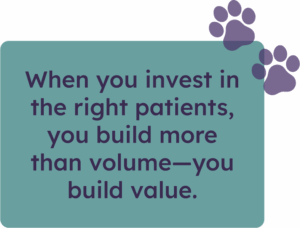 The other common mistake is treating all patients as equal. In reality, patient lifetime value varies dramatically based on the type of care someone seeks, their insurance status, their likelihood to return for follow-up visits, and dozens of other factors. Marketing that treats a one-time urgent care visit the same as a patient establishing a long-term primary care relationship will systematically misallocate resources.
The other common mistake is treating all patients as equal. In reality, patient lifetime value varies dramatically based on the type of care someone seeks, their insurance status, their likelihood to return for follow-up visits, and dozens of other factors. Marketing that treats a one-time urgent care visit the same as a patient establishing a long-term primary care relationship will systematically misallocate resources.
Health system margins are estimated to be 50 to 100 basis points lower in 2027 than they were in 2019 unless there is a significant acceleration in performance transformation efforts. That’s not a lot of room for error. Organizations that fail to optimize their patient acquisition cost simply won’t have the margin cushion to survive the next crisis.
Where Efficiency Gains Actually Come From
The solution isn’t to slash marketing budgets or stop investing in patient acquisition altogether. That would be like addressing a leaky boat by refusing to bail out water. Instead, healthcare organizations need to rethink how they deploy marketing resources.
The most effective approach starts with rigorous measurement. Every marketing channel and campaign should be tracked not just for reach or engagement but for actual patient conversions and the associated costs. That means implementing proper attribution systems that connect a patient’s first touch with your marketing through to their eventual appointment. It requires integrating your marketing platforms with your scheduling systems and electronic health records so you can follow the complete patient journey.
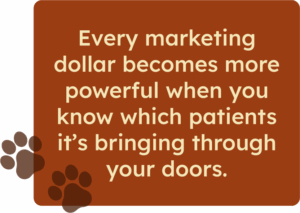
Once you have clear visibility into which channels and tactics drive the lowest acquisition costs, you can start shifting resources accordingly. This doesn’t necessarily mean abandoning expensive channels entirely. Sometimes high-cost channels are worth maintaining because they reach particularly valuable patient populations or play an important role in brand building that supports conversion through other channels. But those decisions should be made deliberately, with full knowledge of the economics involved.
Target the Right Patients, Not Just More Patients
The other major efficiency lever is segmentation. Rather than marketing broadly to anyone who might need healthcare services, successful organizations identify their most valuable patient types and concentrate resources on reaching those specific populations. This might mean different campaigns for different service lines, each optimized for the acquisition cost and lifetime value of that particular patient group.
Predictive modeling can take this even further by identifying which individuals within a target population are most likely to convert, allowing organizations to focus their most expensive marketing touches on the highest-probability prospects. This is where the real profitability gains happen, because you’re not just lowering the average cost per patient acquired; You’re ensuring each marketing dollar reaches someone genuinely likely to need your services.
The Broader Context Leaders Need to Understand
Patient acquisition efficiency doesn’t exist in a vacuum. It connects directly to broader organizational profitability and financial sustainability. According to a Deloitte survey of healthcare executives, 71% expect improved profitability in 2025. Meeting those expectations requires attention to every aspect of operational efficiency, and marketing is one of the largest controllable expenses most organizations have.
Hospital prices have begun to increase significantly, and higher prices can help margins, but they also make patient acquisition more challenging. When healthcare becomes more expensive, consumers become more selective about where they seek care. That means the competition for patients intensifies, which typically drives acquisition costs even higher.
The key is to acquire patients efficiently while simultaneously delivering the kind of experience that drives retention and referrals. It’s a dual mandate that requires both smart marketing and excellent care delivery.
Making the Shift
If your organization doesn’t currently track patient acquisition cost with any precision, start there. Work with your marketing and finance teams to establish a baseline measurement framework. It doesn’t need to be perfect on day one. Even rough estimates will help you make better decisions than flying blind.
From there, the work becomes about continuous improvement. Test different channels and tactics. Measure everything. Be willing to kill campaigns that aren’t delivering acceptable returns, even if they’re generating volume. Look for ways to lower acquisition costs on your best-performing initiatives so you can scale them further.
Most importantly, connect marketing performance to overall financial performance in a way that makes the relationship visible to leadership. When leadership can see the direct line between marketing efficiency and profitability, it becomes easier to secure the resources and organizational commitment needed to truly optimize patient acquisition.
Healthcare profitability is getting harder to achieve. Margins are thin and getting thinner, meaning the organizations that understand their patient acquisition economics and actively manage them will have a decisive advantage over those still operating on gut instinct and historical precedent. The numbers are there to guide you; The question is whether you’re paying attention to the right ones.



